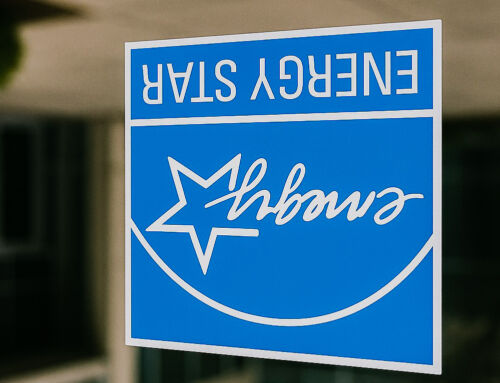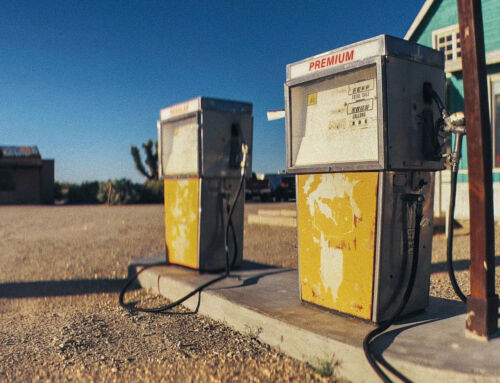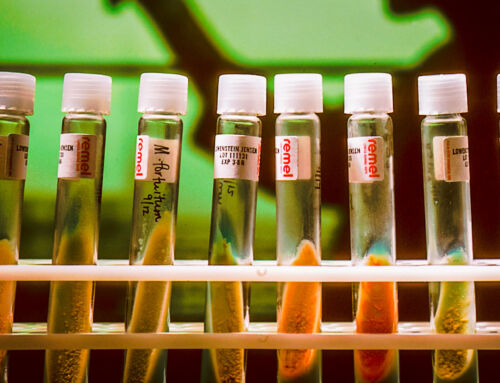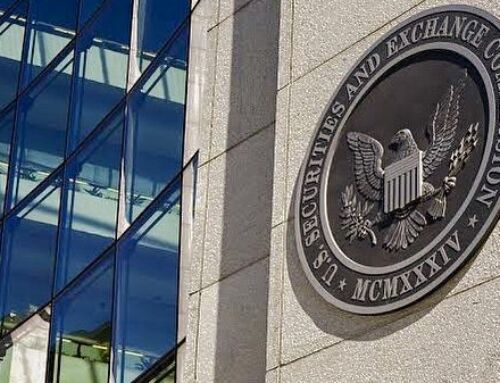View by Topic
Recent Articles
-
Mold Testing in Maryland Real Estate under the New LawSaturday, June 14th, 2025
-
Energy Star: A Quiet Exit and a Bright Future Beyond GovernmentSaturday, June 7th, 2025
-
Congress Blocks California’s Gasoline Car BanSaturday, May 31st, 2025
-
EPA Will Keep Current Limits for “Forever Chemicals” in Drinking WaterSaturday, May 24th, 2025
-
Court Indefinitely Pauses SEC Climate Rule LitigationSaturday, May 17th, 2025
View by Month/Year
“Green Building Law Update” Headlines
Recent Articles & News from
Stuart Kaplow’s blog
at GreenBuildingLawUpdate.com
- Congress Blocks California’s Gasoline Car Ban: A Legal and Policy Analysis June 1, 2025
- EPA Will Keep Current Limits for “Forever Chemicals” in Drinking Water May 25, 2025
- Court Indefinitely Pauses SEC Climate Rule Litigation May 18, 2025
- Maryland is About to Regulate Mold: But is the Cart Before the Horse? May 11, 2025
Subscribe to the Green Building Law Update!
Stuart Kaplow brings his expertise and extensive experience to the table with his unique digital publication, "Green Building Law Update". Subscribers receive regular updates to keep them informed about important issues surrounding Environmental Law, Green Building & Real Estate Law, as well as the emerging demand for Environmental Social Governance (ESG).
Get fresh content through the lense of Stuart Kaplow's cutting-edge expertise, innovative commentary and insider perspective. Don't miss another issue! Subscribe below.
Green Building Law in Maryland: A Survey of Local Government Mandates and Incentives
Ronald Reagan famously told us that the nine most terrifying words in the English language are, “I’m from the government and I’m here to help.”
Maryland, with more LEED® projects relative to its population than any other state, has accomplished that against a backdrop of local government mandates on privately owned buildings, some of which are down right terrifying, including by way of example requiring that within one jurisdiction all new construction and major renovations achieve a LEED Silver or better certification.
This comprehensive compilation identifies and offers guidance with respect to local government Green building mandates and voluntary incentives throughout the state of Maryland.
Three Schemes of Government Regulation
Governments across the country are enacting Green building laws that seek to articulate environmental solutions and energy policy, including laws that respond to the overwhelming public sentiment that government has not done enough to protect the planet. This new body of law follows three distinct regulatory schemes. The first regulatory scheme is for a government to require that its government owned buildings be constructed to an articulated Green building standard. A second, and widely admired, regulatory scheme is when a government offers voluntary incentives to private developers, whether as tax breaks, direct grants or loans, or advantages in processing approvals for Green buildings. And third, a modest but now growing number of local governments are mandating by law that all new construction or major renovations, which exceed a certain square footage, whether public or private, must be constructed to a Green building standard.
This article responds to and addresses the second and third of those regulatory schemes for local governments within Maryland (and not for the federal or state governments) that impact upon privately owned non residential building.
Today Green building is one of the fastest growing sectors in the economy and the greatest business opportunity since the tech boom. The consequences of climate change and the related governmental responses will be unevenly distributed, and this article is about creating opportunities for building owners and the professionals that work with them to make money and thrive. This is by no means a comprehensive treatment of the broader subject of Green building. The goal is modestly to advantage you, with a county by county compilation of local government enactments.
By Way Of Background
Note that this article is dated November 24, 2011 and all information is believed accurate as of that date. However, be aware that this is an emergent and fast evolving field. Of the more than 165 counties and municipalities in Maryland less than a dozen have enacted Green building laws.
Also note, all references in this article to LEED are to the U.S. Green Building Council’s Leadership In Energy and Environmental Design, not-for-profit Green building certification program.
Anne Arundel County
Anne Arundel County does not have a mandatory Green building law. While beyond the scope of this article which is limited to non residential real estate, the County does offer a property tax incentive for high performance dwellings that meet or exceed LEED Silver standards. The tax credit is available for five years and is calculated as a percentage of the county property taxes owed on the dwelling (but not the land) with a maximum incentive for a LEED Platinum dwelling of 80% of taxes owed up to $3,000. See, Anne Arundel County Code, Sec. 4-2-310.
Anne Arundel also offers a onetime credit from county property taxes on residential dwellings that use solar and geothermal energy equipment for heating and cooling, and solar energy equipment for water heating and electricity generation, with a maximum incentive of $2,500. See, Anne Arundel County Code, Sec. 4-2-311 and Sec 4-2-309.
Located within the County, the City of Annapolis has a mandatory Green building law. The law found in the Code of the City of Annapolis, Chapter 17.14, is applicable to all building permit applications for new construction of or major modifications (i.e., and increase of greater than 50% of the gross floor area) to commercial or mixed use buildings of greater than 7,500 square feet of gross floor area; and all applications related to a 5 lot or more subdivision or single family homes in excess of 3,250 square feet. That private building must achieve “a certified level rating in the appropriate LEED rating system, as certified by the ..” U.S. Green Building Council or “as verified by the Director” of the Department of neighborhood and Environmental Programs or utilizing “energy and design standards that the Director identifies as equivalent ..”
The City requires compliance, including presentation of a LEED scorecard, at the time of application for site design review and as a condition of any building permit issued, and “shall not issue a final certificate of use and occupancy for any construction .. unless it finds that the building has achieved the applicable standard.”
Baltimore City
Baltimore City has a mandatory Green building law. The City does not, however, offer local government incentives for Green building.
Baltimore City Building Code, Chapter 37 establishes the City’s Green building program throughout the building, fire and related codes. All newly constructed, extensively modified non-residential, and specific multi-family residential buildings that have or will have at least 10,000 square feet of gross floor area, “for which a building permit application is filed on or after July 1, 2009 must achieve a silver-level rating in the appropriate LEED rating system, as certified by the Green Building Council”. Extensively modified is a structural modification that alters more than 50% of the building’s gross floor area. Multi-family residential covered buildings contain 5 or more dwelling units and are taller than 3 stories; or are mixed use buildings that contain a residential component and are taller than 3 stories.
Significantly, the City promulgated regulations that create the Baltimore City Green Building Standards (a LEED like standard) enabling an applicant to either obtain at a minimum LEED silver certification or obtain City approval under those City Green Building.
Baltimore County
Baltimore County does not have a mandatory Green building law. The County does offer local government incentives for Green building.
Baltimore County Code, Section 11-2-203.1, authorizes an incentive of a tax credit against county real property taxes assessed on a commercial Green building, including multi family residential of 50 units or more, in the LEED-NC (New Construction) rating system, as follows, LEED Silver 50%, LEED Gold 60%, and LEED Platinum 80%. And the duration of the credit is 5 years. For LEED-EB (Existing Buildings), Baltimore County provides a lesser tax credit as a percentage of the county property tax assessed on the building as follows: LEED Silver 10%, LEED Gold 25%, and LEED Platinum 50%. The duration of the credit is 5 years. For LEED-CS (Core & Shell), Baltimore County provides a reduced tax credit as a percentage of the total county property tax assessed on the building as follows: LEED Silver 40%, LEED Gold 50%, and LEED Platinum 70%, for 5 years.
In addition to this tax credit, County Code Section 32-4-204, exempts from the County’s architectural design review, commercial building, if it is part of a development plan located within the Towson Commercial Revitalization District and achieves at least a LEED Silver certification. This is perceived to be a significant benefit within this geographically modest area where all development approvals are hard fought.
While beyond the scope of this writing, County Code Section 11-2-203.2, provides that a homeowner may receive a property tax credit against County real property taxes assessed on a house that is certified in the LEED for Homes rating system. The amount of the tax credit is a percentage of the total County property tax assessed on the high performance home as follows: LEED Silver 40%, LEED Gold 60%, and LEED Platinum 100%. The duration of the tax credit is 3 years. Additionally, in 2010 the County added provisions for a percentage reduction in total county real property taxes for energy efficient improvements to existing homes, but it is not clear that an applicant has yet to successfully claim this credit?
Carroll County
Carroll County does not have a mandatory Green building law, except within the town of Hampstead. The County offers local government incentives for Green building.
Carroll County offers property tax credits on buildings used for business, commercial, or industrial purposes that meet certain Green building standards. The tax credit uses the LEED rating system and the Green Building Institute’s Green Globe rating system as a metric for determining how “environmentally friendly or green” a building is. Buildings must receive a minimum LEED Silver or two Green Globes certification in order to be eligible for any tax credit. An equivalent certification under a county recognized system may also be used to qualify for the property tax credit. The property tax credit is determined as a percentage of county property taxes levied against the improved real property, and may be claimed for five consecutive years: 25% for LEED Silver or equivalent, 50% for LEED Gold or equivalent, and 75% for LEED Platinum or equivalent.
Carroll County also permits the installation of small wind turbines to generate energy. The amendment to the zoning regulations, section 223 of the Code, makes wind energy systems with a generating capacity of not more than 50 kilowatts, an accessory use in all zones and permits no more than two “small wind energy systems” each consisting of a single tower not to exceed 150 feet in height. The 2009 enactment contains a minimum of restrictions, including simply that a tower be “set back a distance equal to its total height plus an additional 20 feet” from property lines and overhead utilities.
Located within Carroll County, the town of Hampsteadhas a mandatory green building law requiring any new building constructed within the Groundwater Conservation District comply with LEED “standards for Silver certification or a standard deemed equivalent by the Commission.” See Hampstead Town Code, Chapter 135, Article XV, Sec. 135-150.
Frederick County
Frederick County does not have a mandatory Green building law nor does the County offer any local government incentives for Green building.
That said, Frederick County provides that a solar collection system, not to exceed in size the greater of ½ of the footprint of the principal structure or 600 feet, is allowed as an accessory use in all zoning districts, by adding Section 1-19-8.205.5 to the Frederick County Code. A limited wind energy system, having a rated nameplate capacity of 50 kW or less and being a total height of 150 feet or less, is also permitted as an accessory use in all zones, by adding section 1-19-8.205.6 to the Code.
Harford County
Harford County does not have a mandatory Green building law. The County does offer a local government incentives for Green building.
To encourage LEED and green building initiatives for mixed use developments zoned MO (Mixed Office District), reductions of required off street parking through the use of shared parking within the development are permitted. The justification for reduced number of parking spaces should be shared parking data from industry groups. See, Harford County Code Section 267-61.
As authorized in Harford County Code Section 123-44, the County also offers a real property tax credit for qualifying energy conservation devices on residential or nonresidential buildings or other structures that use solar or geothermal devices for heating, cooling, or generating electricity for on-site consumption. The credit amount is equal to one year of total real property taxes or $2,500, whichever is less, so this is a very modest incentive for commercial buildings.
Of note, Harford County has added certain definitions to the zoning regulations section 267-4, such that Small Wind Energy Systems are a permitted accessory use in all zoning districts, subject only to modest conditions (i.e., the most burdensome of which may be that a tower for a wind turbine must be set back a distance to the tower height plus 40 feet).
Howard County
Howard County has a mandatory Green building law and offers local government incentives for Green building.
Howard County mandates, through Section 3.1000 et seq, of the Howard County Code that most “New Construction” (which definition includes the renovation of an existing building that changes the gross floor area) that have 50,000 square feet or more of gross floor area, must “achieve a certification from the Green Building Council of certified – level rating or higher in one of the following LEED rating systems: New Construction or Core and Shell” .. or comply with standards determined equivalent by the Director of the Department Inspections, Licenses and Permits. The Code creates a process, commencing with a site development plan application that must contain documentation that the LEED project has been registered with the USGBC. A waiver and fee in lieu process is a component of the law.
As an incentive to encourage Green buildings that exceed Howard County minimum LEED certification requirements, the County also offers real property tax credits for Green buildings. County Code section 20.130 provides: Any new construction (using LEED-NC or LEED-CS) can receive a 5-year real property tax credit. There is a 25% tax credit for LEED Silver, 50% for LEED Gold, and 75% for LEED Platinum.
Any existing building (using LEED-EB) can receive a 3-year property tax credit. There is a 10% tax credit for LEED Silver, 25% for LEED Gold, and 50% for LEED Platinum. A building can receive the 3-year tax credit after the completion of the 5-year credit, if the building is re-commissioned and receives a LEED-EB certification.
Howard County also offers a separate 3-year property tax credit for an energy conservation device (not limited to a solar or geothermal device) that receives a LEED credit and is used in a LEED certified structure, if that structure is not eligible to receive County’s Green building property tax credits. This County tax credit ranges from 14% (for LEED Certified) to 20% for LEED Platinum) of the eligible cost, based on the LEED certification of the building. Section 20.119 of the County Code specific conditions for this credit.
Howard County also has an incentive that advantages “Green Neighborhoods” by amending section 16.1102 of the County Code and the related County Adequate Public Facilities regulations to allow modifications to the General Plan projections for housing allocations. The law allows shifting up to 100 housing allocations per year from the Rural West to a new category of “Green neighborhood” housing allocations, utilizing criteria that are a variation of the LEED Neighborhood Design rating system. Of course, the ‘neighborhood’ may have non-residential components.
And at the time preparation of this article Howard County is on the cusp of enacting an additional real property tax credit for Green residential construction.
Montgomery County
Montgomery County has mandatory Green building laws and the County offers incentives for Green building.
Any “covered building must achieve a Certified level in the appropriate LEED rating system” as required by Montgomery County Code Section 8-49. A covered building means a newly constructed building or extensively modified (non-residential) building or multi-family residential or mixed use building that is taller than 4 stories that has or will have at least 10,000 square feet. Extensively modified refers to any structural modification which alters more than 50% of the gross floor area. The law includes additions that would increase building’s land coverage by at least 100% and gross floor area by at least 10,000 square feet. Proof of compliance is required with a building permit application and a final use and occupancy certificate will not be issued until LEED certification.
Montgomery County offers a real property tax credit in varying amount (10-75%) and term (3-5 years) based on the type project and the rating it achieves as described in County Code Section 52-18Q. For a covered building, already required by County law to meet the LEED certified standard, the amount of the credit is: 25% of the property tax owed on the building for 5 years, if the building achieves a Gold certification for LEED-NC or LEED-CS; and, 75% of the property tax if that building achieves a Platinum certification; or 10% of the property tax owed on the building for 3 years, if the existing building achieves a Gold certification for LEED-EB; and, 50% of the property tax if that existing building achieves a Platinum certification.
For other buildings (not covered by the mandatory LEED standard), the amount of the credit is: 25% of the property tax owed on the building for 5 years, if the building achieves a Silver certification for LEED-NC or LEED-CS; 50% of the property tax if that building achieves a Gold certification; and, 75% of the property tax if that building achieves a Platinum certification; or for existing buildings, 10% of the property tax owed on the building for 3 years, if the existing building achieves a Silver certification for LEED-EB; 25% of the property tax owed on the building for 3 years, if the existing building achieves a Gold certification; and, 50% of the property tax if that existing building achieves Platinum.
Montgomery County offers property tax credits on residential, owner-occupied structures equipped with solar, geothermal, and energy conservation devices. See, Montgomery County Code Section 52-18R.
The City of Gaithersburg, within Montgomery County, added section 3110 entitled “Green Building requirements” to the adopted International Building Code, affecting commercial, high rise residential and multi-family building of more than 4 stories. Commercial and high rise residential structures between 10,000 and 99,999 square feet must be at a minimum LEED Certified. Buildings 100,000 square feet or larger must earn at a minimum LEED Silver certification. Multi-family building of 4 stories or less must comply with the City’s 2007 residential Green building requirements. The City does offer an incentive of discounting city building permit fees from 20% for Certified projects through 50% for Platinum.
The City of Rockville, within Montgomery County, adopted comprehensive amendments to Chapter 5 of the City Code, “Buildings and Building Regulations” including to add several “green” provisions, such as increased energy and water efficiency requirements, as well as adding a new Article XIV, titled “Green Building Regulations.” The regulations apply to new buildings or additions greater than 7,500 gross square feet, or alterations of more than 50% of square feet (if the altered area is at least 7,500 square feet) and mandate new construction and core and shell projects achieve 25 LEED credits and commercial interior projects achieve at least 10 LEED credits.
Prince George’s County
Prince George’s County does not have a mandatory Green building law, but the County does offer a local government incentive for Green building.
The County offers a property tax credit on residential structures equipped with solar or geothermal systems. The tax credit is equal to 50% of the cost of the system, up to $5,000 for heating and cooling systems and $1,500 for water heating systems. See, Prince George’s County Code Section 10-235.06.
There are proposals that Prince George’s County offer incentives in the future. By Executive Order 22-2007, Prince George’s County established a ‘Goes Green Steering Committee’ whose work to date has been to make recommendations to Green County owned buildings. That Committee did establish a certain goal for privately owned buildings, however, no action has been taken on that goal. The goal is: “Goal 3. Establish incentives for existing and newly privately-owned commercial buildings and developments to achieve LEED Silver certification and/or an equivalent utilizing Green Building principals.” Again, no substantive action has been taken to advance that goal.
Washington DC
While obviously geographically beyond the scope of this article, the District of Columbia is proximate to Maryland and has mandated Green building by law. It is worthy of note that the DC Green Building Act requires that beginning January 1, 2012, all new construction and substantial renovation of non residential buildings larger than 50,000 square feet must “..within 2 years of receipt of the certificate of occupancy .. fulfill or exceed the current edition of the LEED standard for commercial and institutional buildings at the certified level.”
Related Considerations
As a related consideration, earlier this year Maryland became the first state to authorized use of the International Green Construction Code. Several local governments in Maryland are considering adoption of the IgCC, but as of the date of this article no Maryland county or city has yet enabled the IgCC.
Also related, there are of course federal and state government laws governing building Green, including federal tax credits and deductions that can be valuable to not only building owners, but often also to designers of high performance buildings and others on project teams.
This is a new and incredibly fast evolving field. The reader is cautioned to make certain that it has the best and most recent information about any government enactment.
Conclusion
Many believe that a voluntary, non mandatory approach to environmental protection is the best hope for stewardship of our planet; hence the broad brand and wide market share acceptance of LEED. LEED was never intended to be made mandatory.
Many are opposed to mandatory Green building laws, including those laws enacted in four Maryland jurisdictions.
The Maryland enactment of the IgCC as a voluntary option for developers is admittedly not a pure voluntary market driven effort, but seeks to strike a balance trending toward stewardship of our planet through voluntary Green building. As LEED 2012 is readied for release with higher standards for energy efficiency, water use reduction, and the like, governments with LEED based mandates will face either making mandatory those even high standards or considering other options, like the IgCC or better yet, the IgCC as a voluntary option.
If we can assist you complying with Green building laws or advantaging government incentives for building Green, in Maryland, DC or elsewhere, do not hesitate to contact Stuart Kaplow at skaplow@stuartkaplow.com









